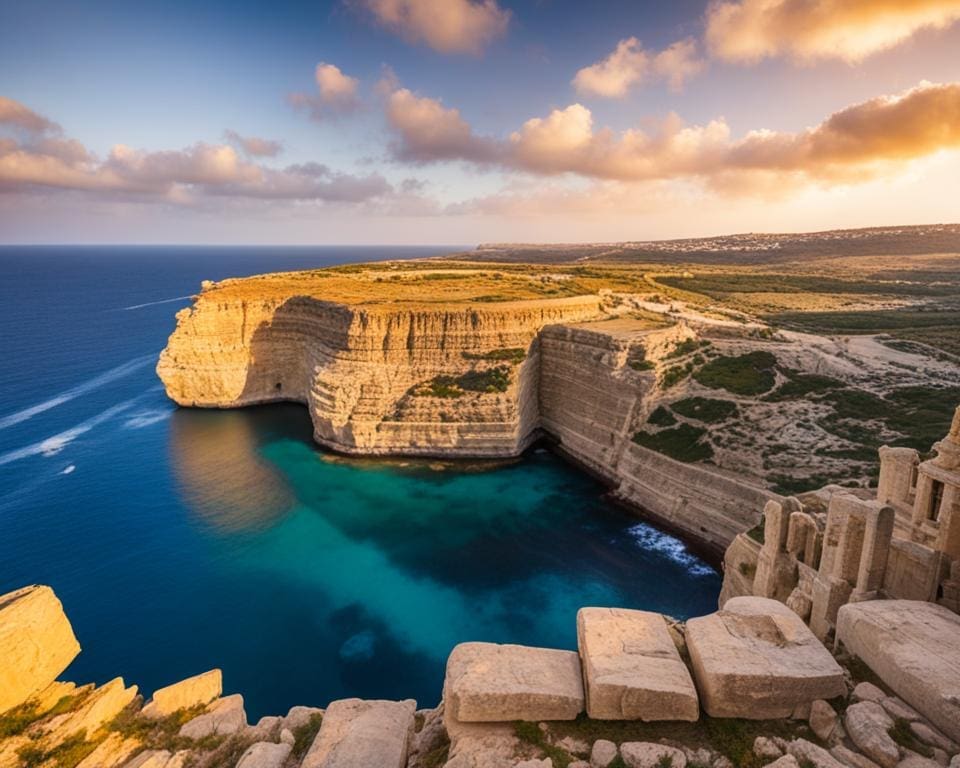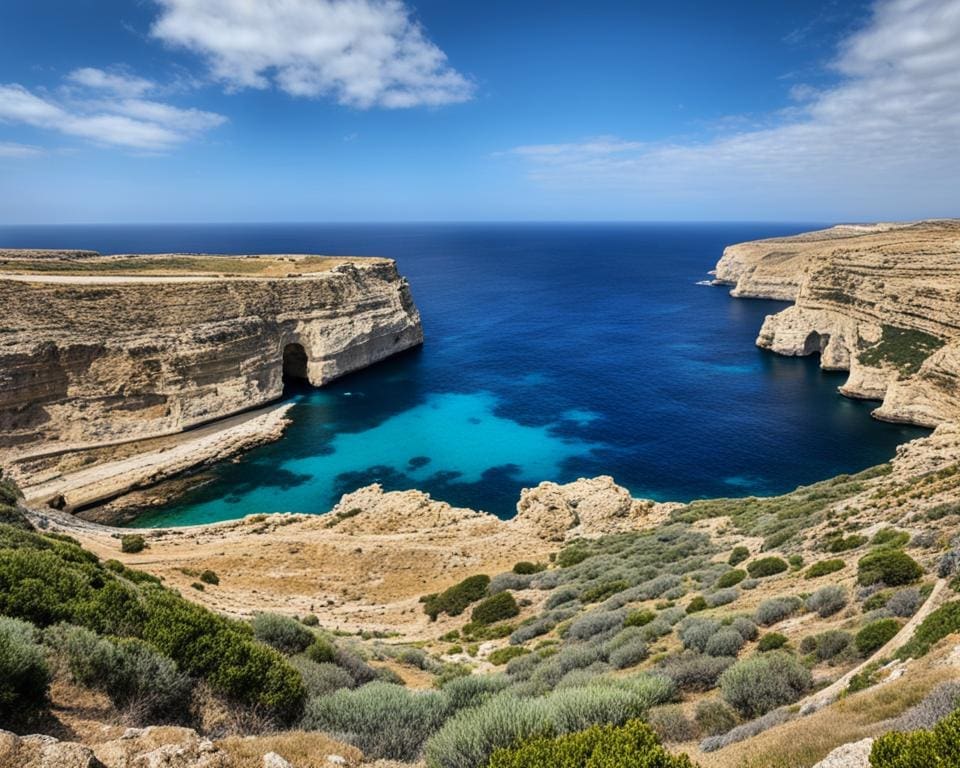Nestled in the Mediterranean’s heart, Malta is an archipelago. It consists of three main islands: Malta, Gozo, and Comino. This destination is famous for discovering Malta’s rich history and stunning coastlines. Its capital, Valletta, is a UNESCO World Heritage Site. The islands offer a wealth of experiences for exploring Maltese history. Valletta showcases Baroque architecture and tells of the cultures that shaped it over centuries.
Malta surprises visitors with its ancient megalithic temples, older than the Egyptian pyramids. Mdina, the “Silent City,” adds to Malta’s historical depth. The Malta tourist attractions also feature amazing coastlines. The Blue Grotto, with its sea caves, provides memorable adventures. For relaxation, stroll in Sliema or visit St Paul’s Bay’s serene beaches.
An eight-day guided tour of Malta offers a mix of history, culture, and natural splendor. Malta’s climate, with mild winters and warm summers up to 32°C, welcomes sun seekers. Experience the vibrant culture and the beauty of this Mediterranean gem during your visit.
Exploring Malta’s Historical Sites
Malta is full of historical sites, telling tales of its notable past. Its stunning architecture and rich heritage draw people worldwide. Highlights include Valletta, Mdina, Ggantija Temples, and the National Museum of Archaeology, showcasing Malta’s historical importance.
Valletta: A UNESCO World Heritage Site
Valletta showcases Malta’s history with its beautiful Baroque architecture. As the capital, it offers vibrant streets and cultural sites to explore. Visitors love St. John’s Co-Cathedral, with its art, including Caravaggio’s works. The Grandmaster’s Palace and Upper Barracca Gardens provide stunning views of the Grand Harbour. Valletta is a top spot for experiencing Malta’s history.
Mdina: The Silent City
Mdina, the “Silent City,” enchants with medieval charm and calm. This town gives a peek into Malta’s past through its ancient gates. Its narrow streets and architecture take visitors back in time. Attractions like St. Paul’s Cathedral and the National Museum of Natural History link closely to Malta’s heritage.
Ggantija Temples: Prehistoric Marvels
The Ggantija Temples show Malta’s link to ancient civilisations. On Gozo, these temples are older than Stonehenge and the Egyptian pyramids. Their carvings and architecture are awe-inspiring. They emphasize Malta’s deep-rooted history and cultural resilience.
National Museum of Archaeology: Unearthing Malta’s Past
The National Museum of Archaeology in Valletta is key for history buffs. It holds artefacts that reveal Malta’s past, from the Ġgantija period to Hal Saflieni Hypogeum discoveries. The museum is vital for understanding Malta’s archaeological wonders, attracting history enthusiasts.

Discovering Malta’s Rich History and Stunning Coastlines
Malta is like a hidden gem filled with ancient wonders and stunning coastlines. It boasts of the oldest free-standing buildings on Earth. These include the Tarxien Temples and the Ħal Saflieni Hypogeum. They offer a glimpse into Malta’s ancient past. These temples show us the spiritual depth and social life of old Maltese culture. Visiting these places feels like a journey back in time. They reveal the rituals and beliefs that shaped this unique culture.
Ancient Temples and their Significance
Malta’s ancient temples tell stories of its past. They showcase the incredible skills of their builders. The carvings and designs hint at a deep understanding of nature and spirituality. These sites draw tourists from all over, keeping Malta’s heritage alive. They are a key part of what makes Malta so special for visitors.
Coastal Wonders: Blue Grotto and Beyond
Malta’s coastlines are just as impressive as its temples. The Blue Grotto is famous for its crystal-clear waters and vibrant colors. Sailing through these caves, you’ll see sunlight dance on the water. It’s an unforgettable experience. Malta combines historical and natural beauty, making every visit memorable. It invites you to explore its rich history and stunning landscapes.









